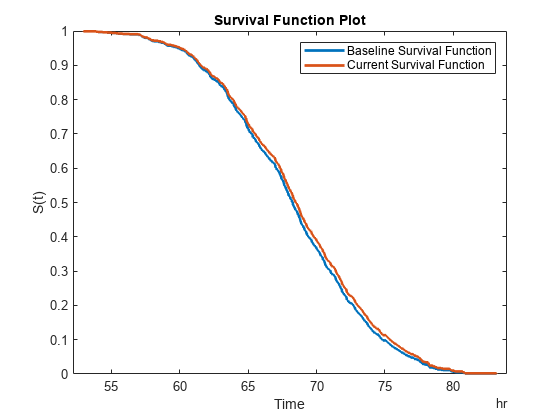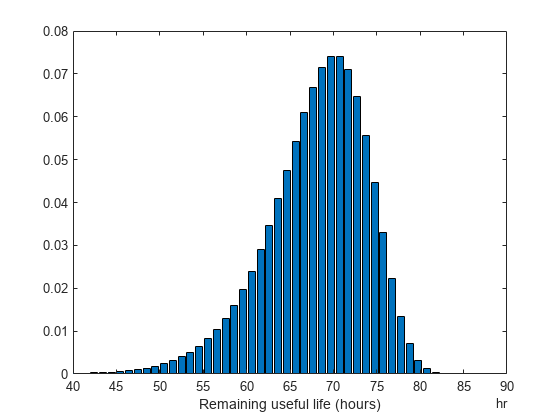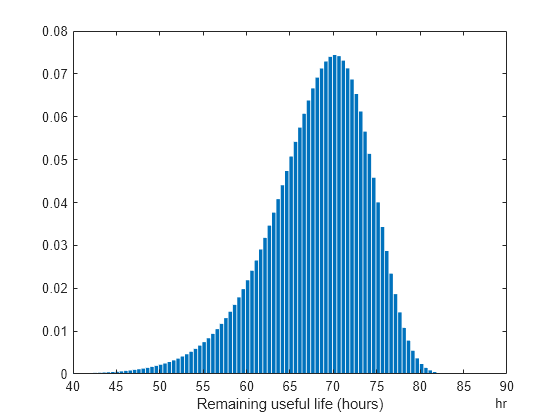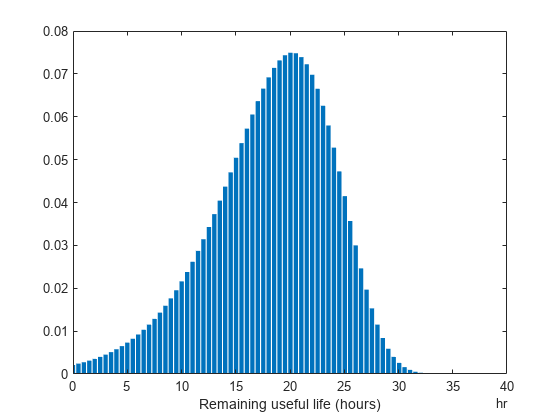predictRUL
Estimate remaining useful life for a test component
Syntax
Description
The predictRUL function estimates the remaining useful
life (RUL) of a test component given an estimation model and information about its usage
time and degradation profile. Before predicting the RUL, you must first configure your
estimation model using historical data regarding the health of an ensemble of similar
components, such as multiple machines manufactured to the same specifications. To do so,
use the fit
function.
Using predictRUL, you can estimate the remaining useful life for
the following types of estimation models:
Degradation models
Survival models
Similarity models
For a basic example illustrating RUL prediction, see Update RUL Prediction as Data Arrives.
For general information on predicting remaining useful life using these models, see RUL Estimation Using RUL Estimator Models.
estRUL = predictRUL(mdl,covariates)mdl and the current covariate values for the
component.
estRUL = predictRUL(___,Name,Value)



